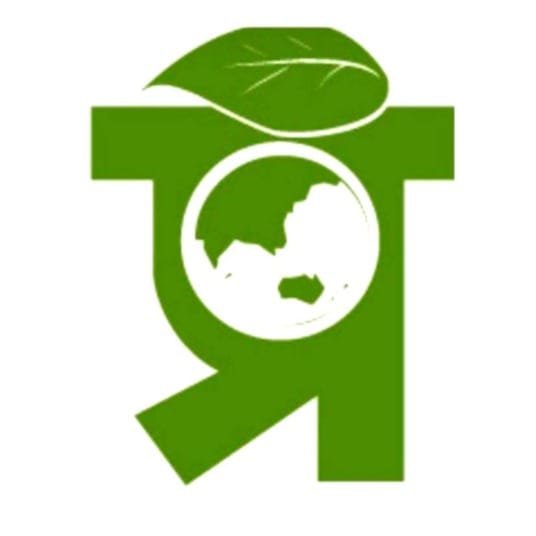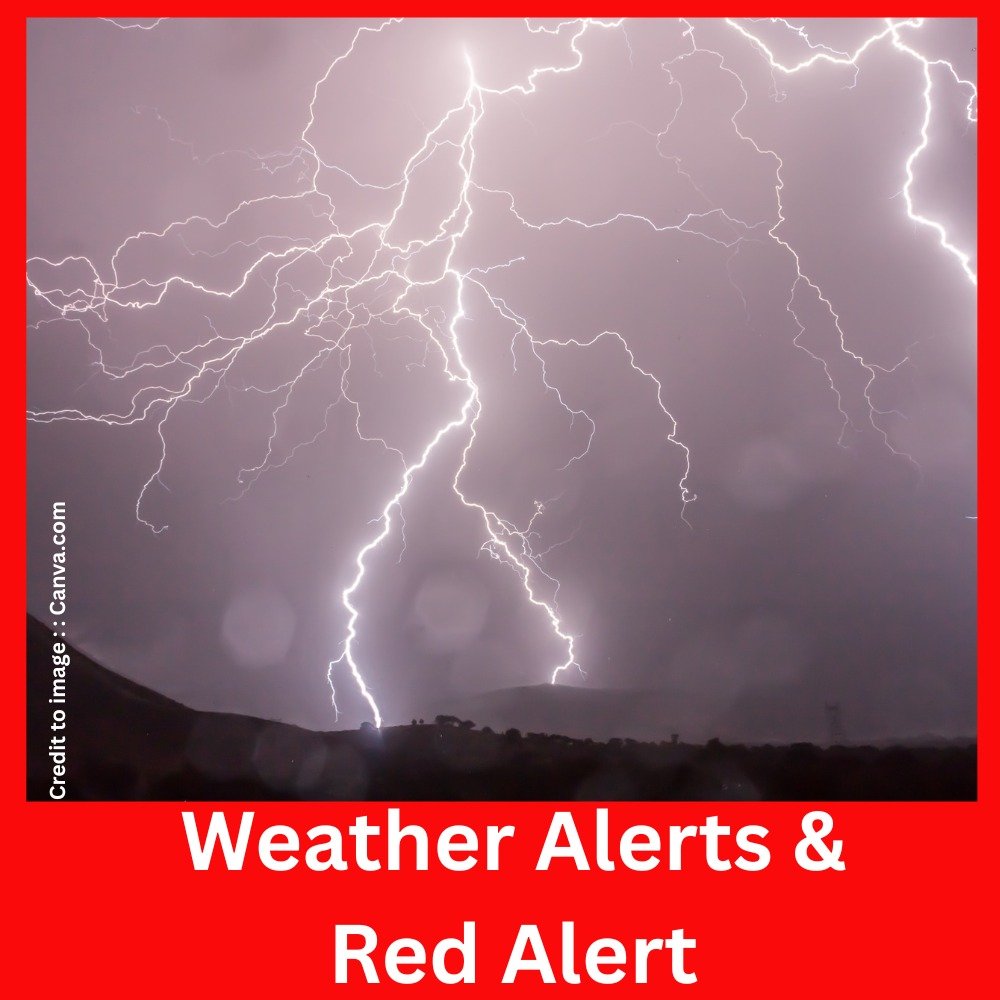Weather Alerts & Red Alert play a crucial role in disaster preparedness and public safety. By providing timely warnings about extreme weather events such as storms, floods, heatwaves, wildfires, and cyclones, these alerts allow individuals, governments, and organizations to take preventive measures. In the era of climate change and rising natural disasters, weather alert systems are not only life-saving tools but also essential for sustainable development and community resilience.
Introduction : Weather Alerts & Red Alert
Weather is unpredictable, and extreme conditions often arrive without much warning. However, with advancements in meteorology, satellite technology, and digital communication, weather alerts have become an indispensable part of modern life. These alerts are disseminated through government agencies, weather departments, mobile applications, and mass media to warn people about upcoming hazards. Their main objective is to minimize loss of life, reduce economic damage, and ensure preparedness at every level of society.
Importance of Weather Alerts
- Life-Saving Measures – Early alerts give people enough time to evacuate or take shelter.
- Disaster Preparedness – Governments can activate disaster management teams and emergency services.
- Agriculture Support – Farmers receive alerts on rainfall, drought, or hailstorms, helping them protect crops.
- Transport & Aviation Safety – Alerts prevent accidents in air, sea, and road transport.
- Public Health Protection – Heatwave and cold wave warnings help prevent weather-related illnesses.
Types of Weather Alerts (Color Codes)
Most meteorological agencies use color-coded alerts to make warnings simple and easy to understand. These codes reflect the severity of risk:
1. Green Alert
- Meaning: No severe weather expected. Conditions are normal.
- Purpose: Advises the public to continue routine activities but stay informed.
- Example: Clear sky, light showers, safe temperature levels.
2. Yellow Alert
- Meaning: Be updated – weather conditions may change.
- Purpose: Warns about potentially dangerous weather, though not severe enough to disrupt daily life significantly.
- Example: Heavy rain forecast, gusty winds, moderate heat or cold.
3. Orange Alert
- Meaning: Be prepared – bad weather is likely.
- Purpose: Signals moderate to severe risk; authorities may prepare for emergency response.
- Example: Cyclone approaching the coast, rising flood levels, intense heatwaves.
4. Red Alert
- Meaning: Take action – extremely severe weather conditions.
- Purpose: Indicates serious threat to life and property; evacuation and emergency measures are often required.
- Example: Cyclones making landfall, flash floods, severe storms, or extreme temperatures.
Weather Alerts & Red Alert : Color Code Table
| Alert Level | Color | Severity | Action Advised |
| Green | 🟢 Green | Normal / No Warning | Safe – continue routine activities |
| Yellow | 🟡 Yellow | Be Aware | Stay updated, minor disruptions possible |
| Orange | 🟠 Orange | Be Prepared | Prepare for possible emergencies |
| Red | 🔴 Red | Take Action | Severe weather – immediate precautions needed |
Weather Alert Systems Worldwide
Different countries have developed advanced weather alert systems:
| Country | Agency/Technology | Focus |
| USA | National Weather Service (NWS) | Tornadoes, hurricanes, floods |
| India | India Meteorological Department (IMD) | Monsoon, cyclones, heatwaves |
| Japan | Japan Meteorological Agency (JMA) | Earthquakes, tsunamis, typhoons |
| Australia | Bureau of Meteorology (BOM) | Bushfires, floods, storms |
| Europe (EU) | MeteoAlarm & EUMETSAT | Multi-country alerts |
Modern Technology in Weather Alerts & Red Alerts
Satellites – Track cloud patterns, storms, and heat zones.
- Mobile Applications – Push notifications for real-time alerts.
- Artificial Intelligence (AI) – Improves accuracy in weather predictions.
- Internet of Things (IoT) – Sensors detect local temperature, humidity, and rainfall.
- Social Media – Fastest medium for spreading urgent alerts.
Challenges in Weather Alerts
- Lack of awareness among rural populations.
- Delays in communication due to poor internet or mobile networks.
- Misinformation and fake alerts causing panic.
- Limited coordination between international weather agencies.
Conclusion
Weather alerts are more than just warnings—they are a vital component of global disaster management and community safety. The color-coded alert system (Green, Yellow, Orange, Red) has made it easier for people to understand the severity of threats. In a changing climate where extreme events are increasing, accurate and timely weather alerts can save countless lives and reduce economic losses. Public awareness, government responsibility, and international cooperation must go hand in hand to make these systems more effective.
FAQs on Weather Alerts & Red Alert
Q1. What is the purpose of weather alerts?
Weather alerts are issued to warn people about dangerous weather conditions so they can prepare and stay safe.
Q2. Who issues weather alerts in India?
The India Meteorological Department (IMD) issues official weather alerts.
Q3. What is a red weather alert?
A red alert is the highest warning level, indicating severe risk to life and property.
Q4. How do weather alerts help farmers?
They help in planning irrigation, protecting crops, and reducing agricultural losses.
Q5. Which technology is used for weather alerts?
Satellites, radars, AI models, and mobile networks are commonly used.
Q6. What is the difference between yellow and orange alerts?
Yellow means “be aware” of possible bad weather, while orange means “be prepared” for likely severe weather.
Q7. Are weather alerts the same worldwide?
Most countries follow similar color codes, but details may vary by region.
Q8. What is a green alert?
It indicates normal conditions with no significant risk.
Q9. Can weather alerts predict earthquakes?
Weather alerts cant predict Earthquakes . Alerts focus on weather-related hazards like storms, floods, and heatwaves.
Q10. Explain about the alerts communicated to the public?
Through News Channel , Departmental Website and App , radio, mobile apps, SMS, sirens, and social media platforms etc . if required than village level communication by local administrative officers or by local administration .
Reference :
- IMD
- WMO
- Disaster Management Dept.
- Earthquake departments
- Other
PRAKRITI DARSHAN-NATURE AND ENVIRONMENT MAGAZINE
Prakriti Darshan is a leading Hindi-language magazine and digital platform dedicated to raising public awareness on vital issues related to nature, biodiversity, climate change, sustainable development, and environmental conservation. This magazine represents a unique blend of science, society, and sensitivity—offering a common platform for researchers, students, NGOs, policymakers, nature lovers, and conscious citizens alike.
With thought-provoking articles, inspiring stories, environmental research, impactful projects, and policy perspectives, Prakriti Darshan is a transformative journey toward a greener and more sustainable future.
Let us come together to protect and preserve our planet for generations to come. 🌿🌍
Join us in our mission to protect and celebrate the planet. 🌏💚
Click for more information
- Visit www.prakritidarshan.com for Free Magazine ,Free membership benefits ,offered price magazine @ Rs.1 or Rs.11 only and more ……
- 🎗️Sponsor Prakriti Darshan Magazine – Support our environment mission.
- 📚 Explore the Environment Magazine – Read our latest and past issues.
- ✍️ Read Editor’s Article or Blog – Insightful thoughts from our editorial desk.
- 🌱 Join Membership – Be part of India’s leading green community.
- 🤝 Become an NGO Impact Story Partner – Share your grassroots impact nationwide.
- 🏢 Become a Company Partner – Showcase your CSR, ESG, or sustainability work.
- 👤 Become an Individual Partner – Volunteer, write, and raise your green voice.
- 📢 Advertise with Us – Reach eco-conscious readers across India.
- Eco Trails Newsletter
- Donate for “Hari Ho Vashundhara & Har school Hariyali “ Plantation campaign Associated Partner NGO :GDSS NGO www.gdssngo.org
BALA DATT SHARMA,
MANAGING EDITOR ,
PRAKRITI DARSHAN-NATURE AND ENVIRONMENT MAGAZINE
- Drake Passage: The World’s Roughest Sea Route Between Atlantic and Pacific Oceans - August 22, 2025
- Top 10 Natural Parks in the USA: Biodiversity, Geography & Global Relevance - August 21, 2025
- Exploring the Best Natural Parks in USA: Biodiversity, Sustainable Tourism, and Role in SDGs - August 21, 2025







